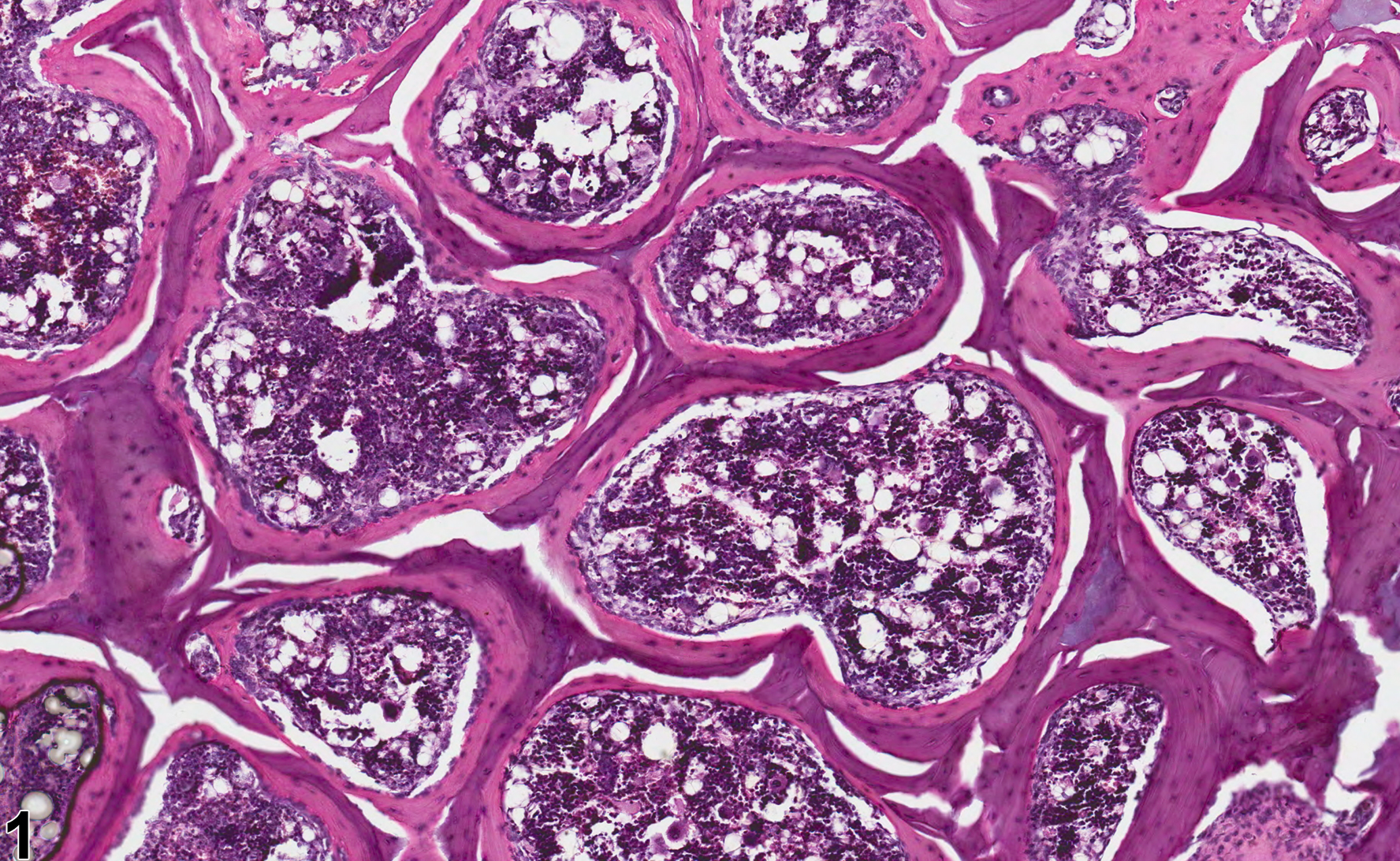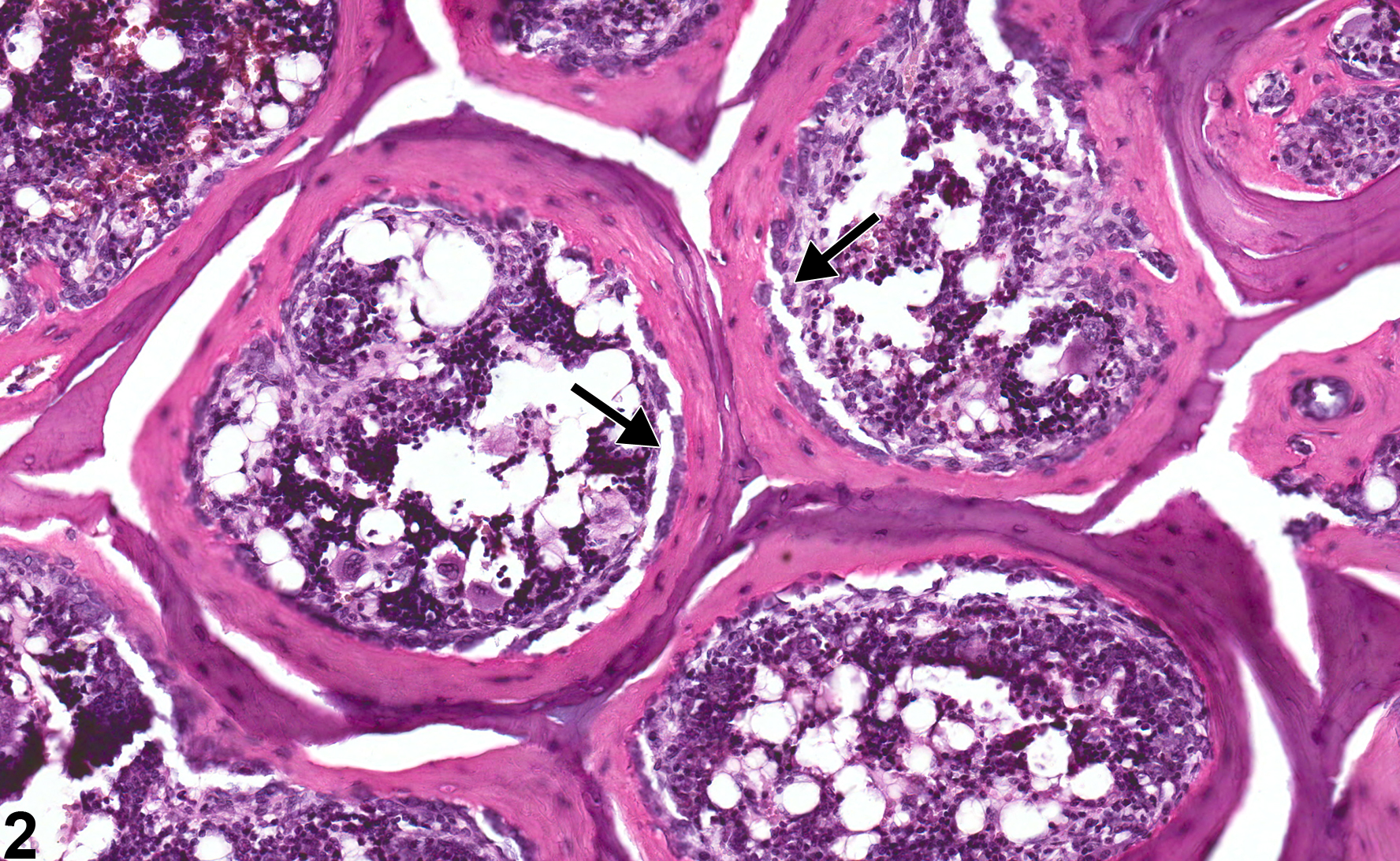Musculoskeletal System
Bone - Increased Osteoid
Narrative
The term "osteomalacia" has historically been used to describe failure of newly formed osteoid to mineralize. However, when describing the above lesion, the term "increased osteoid" is preferred over "osteomalacia," since the latter denotes a gross morphologic change of bone (softening).
Increased osteoid should not be used as a diagnosis for delayed or inadequate mineralization of physeal or epiphyseal cartilage when occurring at the growth plates. This is more appropriately recorded as physeal dysplasia (rickets) and differs from increased osteoid by the presence of thickened cartilaginous growth plates and retained cartilage cores within the metaphysis (see ) rather than excess osteoid.
Boyce RW, Weisbrode SE. 1985. Histogenesis of hyperosteoidosis in 1,25(OH)D-treated rats fed high levels of dietary calcium. Bone 6:105-112.
Abstract: http://www.ncbi.nlm.nih.gov/pubmed/3839678Leininger JR, Riley MGI. 1990. Bones, joints, and synovia. In: Pathology of the Fischer Rat: Reference and Atlas (Boorman G, Eustis SL, Elwell MR, Montgomery CA, MacKenzie WF, eds). Academic Press, San Diego, 209-226.
Long PH, Leininger JR. 1999. Bones, joints, and synovia. In: Pathology of the Mouse (Maronpot R, Boorman G, Gaul BW, eds). Cache River Press, St Louis, 645-678.
Long PH, Leininger JR, Ernst H. 1996. Proliferative lesions of bone, cartilage, tooth, and synovium in rats, MST-2. In: Guides for Toxicologic Pathology. STP/ARP/AFIP, Washington, DC.

Bone - Increased osteoid in a male F344/N rat from a chronic study There is deposition of unmineralized osteoid along the existing trabeculae.



